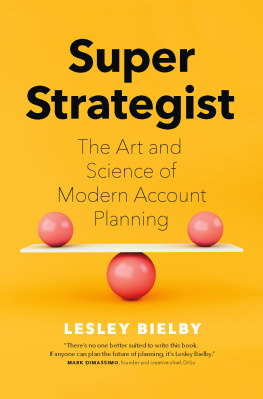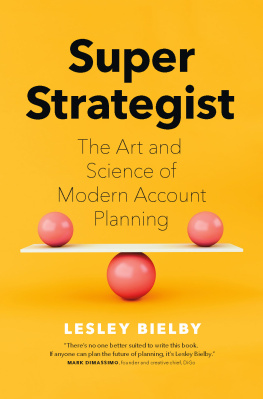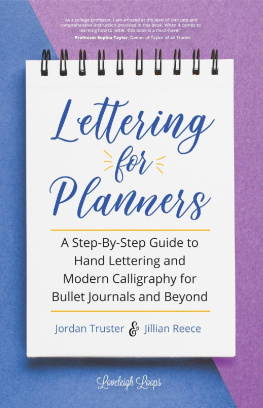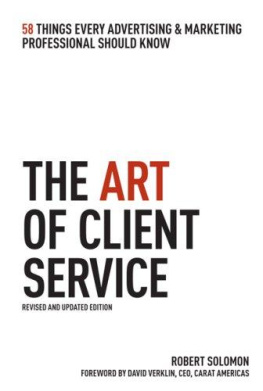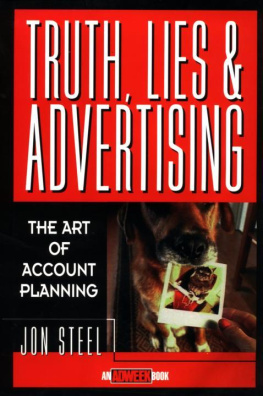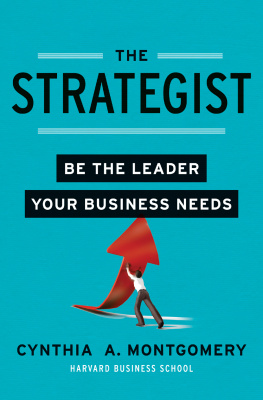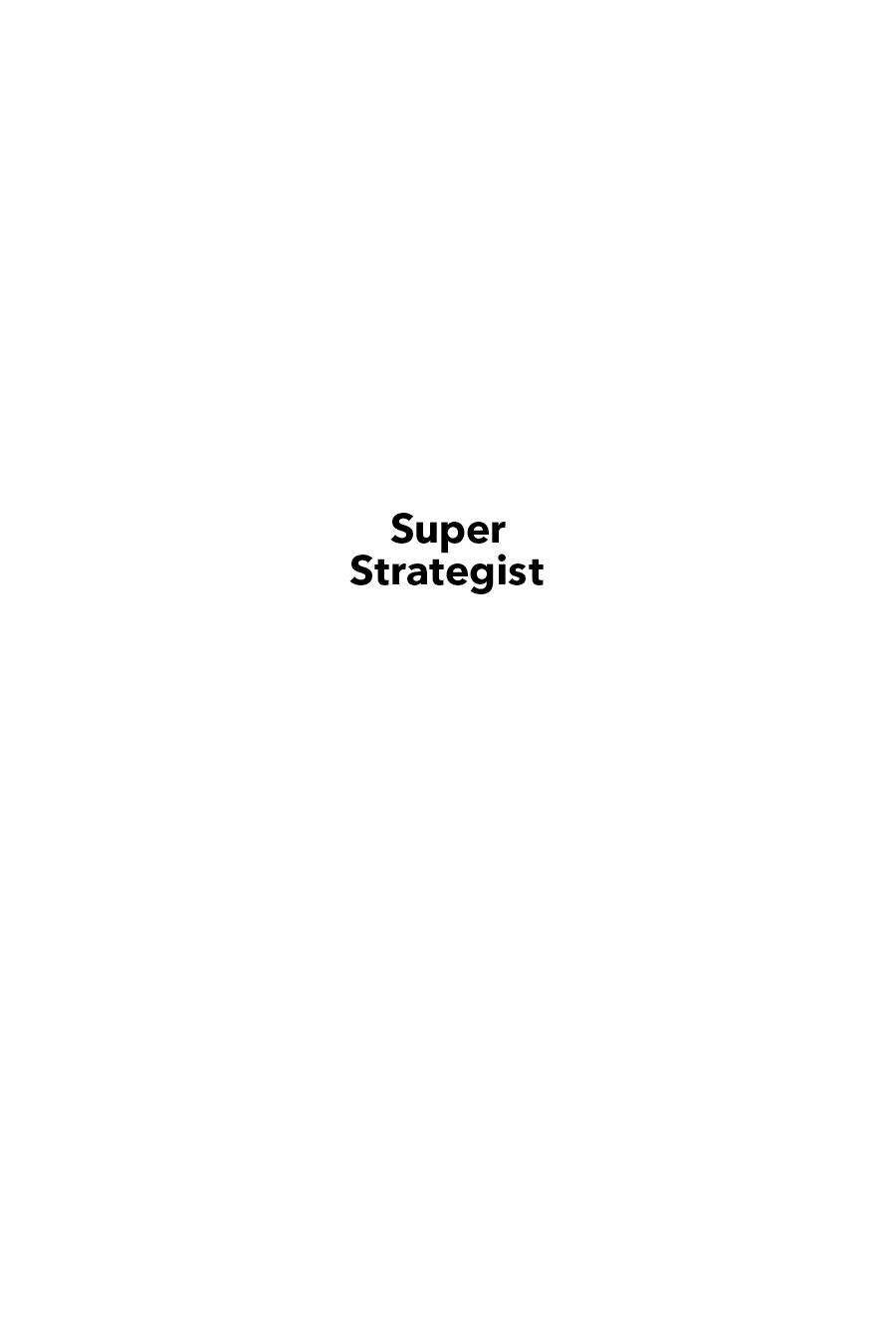If it doesnt sell, it isnt creative.
David Ogilvy
For Archie, Iona, and Euan
Copyright 2021 by Lesley Bielby
Foreword copyright 2021 by Douglas Atkin
All rights are reserved, and no part of this publication may be reproduced, stored in a retrieval system, or transmitted in any form or by any means, electronic, mechanic, photocopying, scanning, recording, or otherwise, except as authorized with written permission by the publisher. Excerpts from this publication may be reproduced under license from Access Copyright.
All images copyright the author, unless indicated otherwise. Efforts have been made to determine copyright holders and to obtain permission for the use of copyrighted material. The publisher apologizes for any errors or omissions and would be grateful if notified for future printings.
Cataloguing data is available from Library and Archives Canada
ISBN 978-1-77327-147-7 (hbk.)
ISBN 978-1-77327-148-4 (ebook)
ISBN 978-1-77327-149-1 (pdf)
Jacket design by Jessica Sullivan and Naomi MacDougall
Front jacket image by nicomenijes/iStockphoto.com
Author photograph by Jeremy Ramirez
Editing by Michael Leyne
Copy editing by Jennifer D. Foster
Proofreading by Alison Strobel
Distributed internationally by Publishers Group West
Ebook by BrightWing Media
Figure 1 Publishing Inc.
Vancouver BC Canada
www.figure1publishing.com
Foreword
I thought it was odd , when I arrived in New York from London almost 30 years ago, that many clients and agency colleagues thought that planning was about being consumer-led. Odd, for two reasons. For many of our clients (and some of the agency people), thinking about the consumer at all in the development of the brand was considered to be a huge innovation. They were touting it proudly and glad to have our help. But, it was also odd, because even some of the leaders of this new Brit-import called account planning thought that consumer-led defined this new discipline. In my view, it doesnt and it never did.
Saying youre consumer-led means well. Its trying to put the consumer at the center of your operations. Which, as I mentioned, was a radical idea 30 years ago and a big advance for many companies. But being led by the consumer is a very dangerous idea. It will mean that you will almost always be a follower. You will seldom innovate.
Its much better to be idea-led, but consumer-informed.
Im talking about this in the Foreword to Lesleys excellent and much-needed book, because theres always been the need to balance art and science in the act of branding. But science should always be in the service of ideas. Ideas change things. They disrupt the status quo and force a change in peoples attitudes, beliefs, and behaviors.
This is something we lived daily during the hyper-growth years at Airbnb, as it disrupted not just categories, but also whole economies. Even fundamental human behavior. Apparently, it was a crazy idea to trust strangers enough to have them stay in your home. But it was an idea that went from crazy to the new norm, with many disruptions on the way.
The three founders are different from most Silicon Valley types. Two of themBrian and Joewere product designers. They have a hunger for big cheeky ideas. Data was there to inform those ideas: to make them less of a leap into the dark and more of a step into the semi-light. The data gave us confidence that this was (probably) the right thing to do. But, ultimately, we knew that a truly good idea was always going to have risk attached.
And thats what makes good planners, in my view. They are there to champion big ideas. And they do it with a conviction thats derived from data that says its (probably) the right thing to do. But they also do it with the conviction that great ideas make big things happen. Because, after all, if youre not helping make big things happen with a big juicy idea, whats the point?
Douglas Atkin Former Global Head of Community & Architect of Purpose, Culture and Core Values, Airbnb Author, The Culting of Brands
July 2020
Introduction
I n 1999 , I crammed myself into a Marriott Hotel conference room with over two thousand other people. Standing room only. Speak-ers lined up on the front row with notes in clammy hands. We were at one of the earliest Account Planning Group conferences in the United States. The energy was palpable. As everyone settled in to listen to the first speaker, Iand every other person in the roomrealized that because of the two thousand souls in this room, the advertising industry in the United States would never again be the same. This was a pivotal moment in our industry. Truly, the beginning of a new and exciting era.
I had been headhunted from the trendy, maverick London hot shop, Howell Henry Chaldecott Lury, 6 months earlier, to bring the discipline of account planning to iconic Southern ad agency, McKinney & Silver. A big Audi of America client meeting had been canceled, and I was curious to see what a room full of American planners looked like, so had decided at the last minute to attend the conference. I have never loved crowded conferences, being somewhat introverted and slightly claustrophobic. But planning was in its infancy in the USA , so I assumed the conference would be small, intimate, low key, and manageable.
I couldnt have been more wrong. Where had these people come from? How was it possible that over two thousand planners could even exist in America already, never mind attend the same conference?
As I worked my way around the room, uncomfortably introducing myself to those in close proximity, I quickly realized that only about a tenth of these people were truly experienced account planners. And most of those were Brits who had crossed the pond before me, bringing the discipline with them. I already knew some of them from the UK , and several were my heroesthey had sought new adventures in the U.S., after making their mark on the industry after many, many years in London agencies.
So, if most werent already planners, who were they? As it turned out, they were account managers, media planners, researchers, business analysts, and brand consultants. Like moths to a flame, they had smartly noticed the brilliant growth of this important new discipline in other agencies all across North America and had responded by switching hats and quickly learning this new tradetypically, from their new British department heads.
I believed then, and still believe today, that only in America could a craft that had taken over 30 years to develop in the UK be so quickly mastered by a ragtag group of strategic and insightful misfits. Today, this group has become, arguably, the most influential account planning force in the world. And all of this over a short handful of years.
Over 2 decades later, we find ourselves at another pivotal moment, as our industry struggles to stay relevant in the aftermath of three serious crises, the most recent being COVID - 19, which forced many of our agencies to their knees at shocking speed.
Over the last decade, in particular, the advertising industry has changed beyond recognition. Account planning, whose original role was to find and use consumer insight to inform stronger creative ideas, has been utterly transformed into a discipline that most of us dont even call account planning anymore. (At our agency, we now call it strategic planning. It can also be called creative strategy, brand strategy, or brand planning. In reference to the early days, I will refer to it as account planning (in ) and will then switch to strategic planning.)

